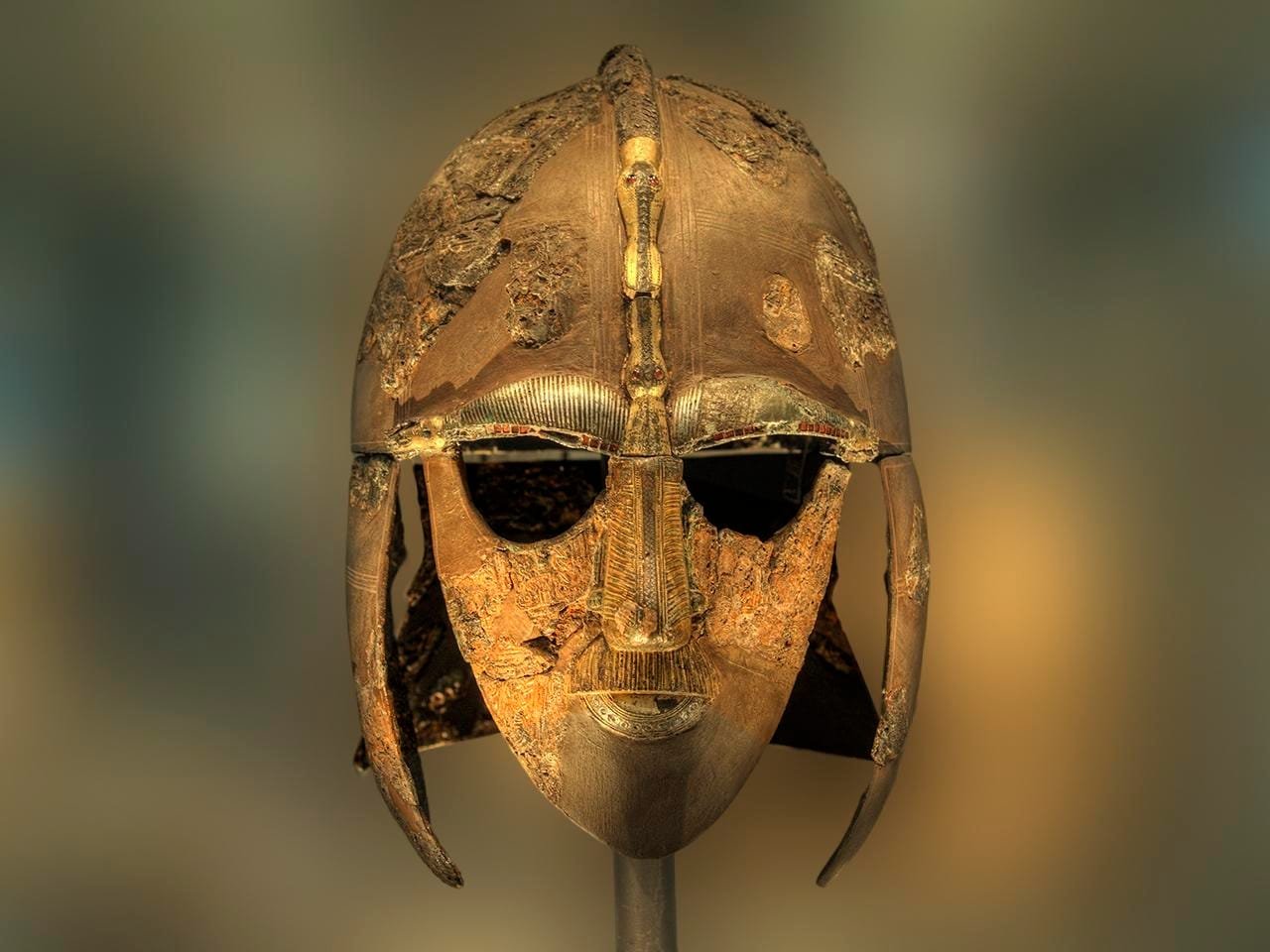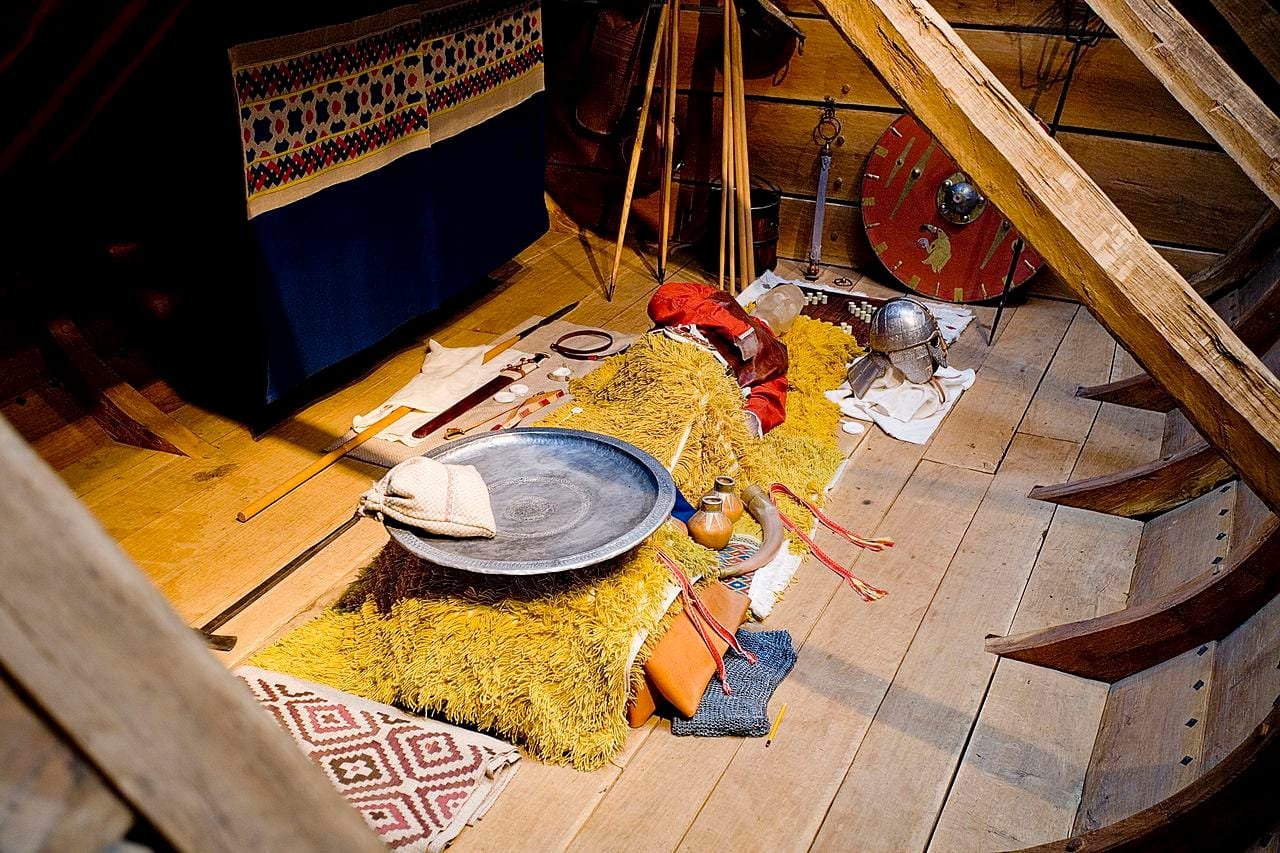A recent study conducted by Dr. Helen Gittos, a professor specializing in medieval history at the University of Oxford, challenges perceptions regarding Sutton Hoo, which is recognized as one of England’s most significant archaeological locations. Her findings, disseminated in the English Historical Review, propose that certain individuals interred at the Sutton Hoo site could have been distinguished Anglo-Saxon warriors who fought for the Byzantine Empire, rather than kings or local aristocrats.
 Sutton Hoo helmet from the Anglo-Saxon ship burial, displayed at the British Museum. Credit: Neil Howard, CC BY-NC 2.0, modified by Archaeology News
Sutton Hoo helmet from the Anglo-Saxon ship burial, displayed at the British Museum. Credit: Neil Howard, CC BY-NC 2.0, modified by Archaeology News
Discovered in the late 1930s in Suffolk, England, Sutton Hoo is a group of 20 burial mounds, including one that covers the remains of an oak ship 27 meters long and laden with precious objects. Among the objects are weapons, jewelry, silverware, and textiles pointing to the high rank of those buried there. The site has quite often been linked with Anglo-Saxon nobility, and many historians believe it might be the final resting place of King Rædwald of East Anglia, who ruled in the early 7th century.
However, Dr. Gittos proposes a different interpretation, suggesting that Sutton Hoo’s ship burial reflects connections to the Byzantine world. “We always want these people to be kings,” she told The Times. “But this is another example of how you might have received considerable honors in your burial, but it doesn’t mean that you’re royal.”
 Burial chamber of the Sutton Hoo ship-burial 1, England. Reconstruction shown in the Sutton Hoo Exhibition Hall. Credit: Gernot Keller, CC BY-SA 2.5
Burial chamber of the Sutton Hoo ship-burial 1, England. Reconstruction shown in the Sutton Hoo Exhibition Hall. Credit: Gernot Keller, CC BY-SA 2.5
Dr. Gittos and other researchers have highlighted a number of artifacts from Sutton Hoo that show connections with the Byzantine Empire. The most conspicuous are silver spoons with Greek inscriptions, a silver platter bearing the monogram of Emperor Anastasius I (491–518), and a bronze bowl believed to have come from the Eastern Mediterranean. Rather than being evidence of trade between England and Byzantium, such items likely arrived in England as personal belongings of Anglo-Saxon warriors returning from Byzantine military campaigns.
 An image of the buried ship was revealed during excavations in 1939. Credit: Harold John Phillips
An image of the buried ship was revealed during excavations in 1939. Credit: Harold John Phillips
In the 6th century, the Byzantine Empire, embroiled in heavy fighting with the Sasanian Empire of Persia, launched mᴀssive recruitment drives across Europe. These drives aimed to recruit skilled cavalry warriors, leading to the formation of a group known as the foederati. Historical records show that the Britons, who were celebrated for their skills as woodland fighters, were among those recruited. According to Dr. Gittos, such prestige gained through these military campaigns might have increased the social status of soldiers when they returned, allowing for lavish burials such as the ones at Sutton Hoo.
The famed Sutton Hoo helmet, adorned with images of mounted warriors, and other items like riding gear and horse burials suggest the prominence of an equestrian elite. “We should be willing to consider that these weren’t men dressed up as Roman soldiers,” Dr. Gittos writes. “They were Roman soldiers.”
 Clockwise from upper left: The purse-lid, Great Buckle, ornate gold belt, and the two identical shoulder clasps from the treasure. Credit: Wikipedia
Clockwise from upper left: The purse-lid, Great Buckle, ornate gold belt, and the two identical shoulder clasps from the treasure. Credit: Wikipedia
Although Sutton Hoo was discovered nearly a century ago, it continues to yield new revelations. Dr. Gittos’s research into the site has forced a reevaluation of the idenтιтies of those buried there, putting into sharper focus their possible roles as soldiers in the Byzantine army rather than merely local rulers.
More information: Gittos, H. (2025). Sutton Hoo and Syria: The Anglo-Saxons who served in the Byzantine army? The English Historical Review. doi:10.1093/ehr/ceae213





